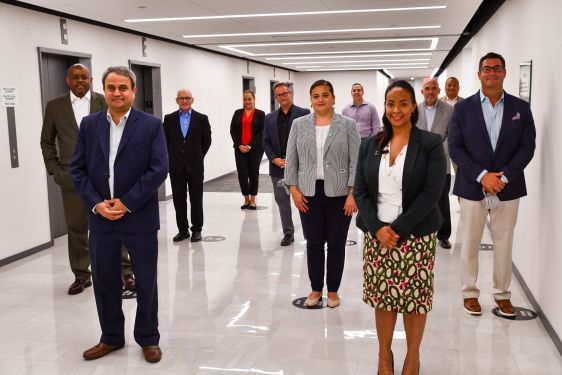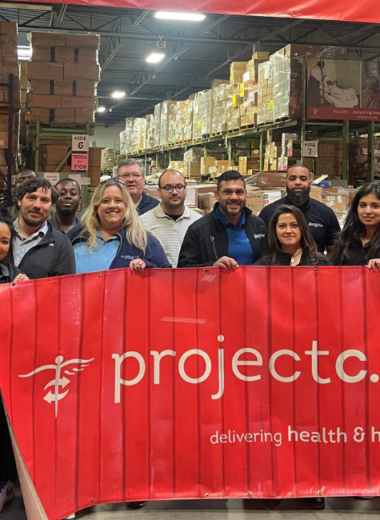New York United: How Diversity Got Us Through Our Toughest Challenge Yet
New York’s healthcare system hit a milestone on July 12, 2020. It was the first day, since March 13 of this year, that the state recorded no deaths from COVID19.
That success was earned with the sacrifice and vigilance of all New Yorkers, especially those in hard-hit New York City. Each resident’s resolve to quarantine and social distance, despite famously cramped apartments in the population-dense metropolis, gave their elderly and medically vulnerable neighbors—no matter their color, creed, race or religion—a chance to survive. That unity in the face of COVID19 will be remembered for generations.
That success was earned with the sacrifice and vigilance of all New Yorkers, especially those in hard-hit New York City. Each resident’s resolve to quarantine and social distance, despite famously cramped apartments in the population-dense metropolis, gave their elderly and medically vulnerable neighbors—no matter their color, creed, race or religion—a chance to survive. That unity in the face of COVID19 will be remembered for generations.
Crothall and Compass One are proud to have been part of this historic response. Our leaders and associates were key players in transforming Elmhurst Hospital and the Javits Center, the “epicenter of the epicenter” of the first wave, into COVID19 treatment centers. The toll on our people was heavy. Many got sick. Some didn’t make it.
“We were affected personally,” says Crothall RDO Shurland Fields. “We had to deal with it. Managers had to take time off because they had contracted coronavirus, or had been exposed and were under 14-day quarantine. We had to cover for each other. And send out condolences to friends who lost loved ones.” Shurland is a leader in Healthcare Technology Solutions.
“We became procurement, we became distribution, our job descriptions were ripped off the wall,” adds RDO Jeffrey Gontarek. “All of us were doing whatever had to be done. It wasn’t just Crothall. Every hospital team was working hard to save lives, no matter what it took.” Jeffrey’s specialty is Environmental Services (EVS).
“The common cause brought us together,” says RDO Marissa Janneire, also of EVS. “There was so much loss, so many people dying. We were checking in to make sure our friends and coworkers were still there. After someone got COVID, we just wanted to know that two weeks later they were still here. You’d work with them one week, and the next they wouldn’t be there.”
Our healthcare heroes persevered through it all. Today, after so many endless shifts beneath sweaty layers of PPE, after so much death and personal loss, mortality rates in New York have finally fallen back to pre-pandemic levels. Together, we have created a model for success that other cities and states will need to emulate.

United We Stand
After the peak of the crisis passed, Crothall leadership began analyzing the different factors that bolstered our teams’, and New York City’s, success. They began to understand that it came down to much more than just ventilators, PPE, and ICU beds.
As they took stock of what had just happened, they realized a key factor was the ability of team members from diverse communities and specialties to work together effectively, with mutual trust and respect. “Our teams ran the gamut,” says Marissa. “Different races, nationalities, and religions. Men, women, old, young, people who had different experiences outside of work.”
Each team member was able to contribute unique skills and experiences. Diversity became a superpower, one that will be increasingly important as Crothall teams across the country are called on to face rising numbers of COVID infections in their own states.
“There was a group text with 21 managers at Elmhurst and the Javits Center,” says Marissa. “We would talk about the different challenges facing our teams, and we would reassure each other that when someone got COVID, we would be there, we would make sure that they were covered, that we would do what needed to be done.”
“We became each other’s cheerleaders,” says Shurland. “Acknowledging strengths. Celebrating work well done. Looking for jokes that weren’t too morbid.”
“They were like war buddies,” says Compass One Director of Communications Rebecca Monroe, recalling the shared conversations and stories from that challenging time.
Indeed, like soldiers in the trenches, Crothall teams suited up for battle every day, and were effectively cut off from the friends, families, and communities they were risking their lives to save. The constant exposure to COVID19 made them potential disease vectors, so they had only each other to rely on.
“In the middle of all this death, we could laugh about silly things,” remembers Marissa. “Who could cut hair—straight or curly. One of the secretaries had been a hairdresser in a previous life. Another leader introduced us to Lee Press-On Nails. They kept us looking presentable for new patients. It kept us going.”
Diverse healthcare teams, working together and contributing the abilities their different life experiences had given them, meant more than just keeping moral up. Crothall associates were fluent in different languages, customs and cultures, inside knowledge that meant the difference between life and death for some patients. And which also helped our teams comfort others for whom the ICU was a deathbed, so close and yet so far from their families and friends.
“If not for every member of the team, we might not have survived,” says Marissa. “Our teams are so diverse, and if we had not had every one of those experiences, those strengths, those differences, we wouldn’t have made it. Everyone came with their ideas, care, compassion, war gear, behavior. All the teams were that way. We had to work together.”
Building a Better Crothall Through Diversity and Inclusion
After New York City closed the field hospitals and began to slowly and carefully reopen the economy, Crothall’s leadership met to take stock of what had just happened. They decided that creating a task force for diversity and inclusion, a template Crothall accounts across the country could use, was paramount.
“We wanted representative leadership from EVS, BioMedical Engineering, Central Sterile, and other departments to meet,” says Shurland. “One of our primary concerns was establishing a fair way for the rank and file to reach out with positive and negative comments about how we’re handling diversity and inclusion, and use that feedback to continuously improve.”
“If there’s a disparity that’s unfair, we want to have a body that can look into it,” continues Jeffrey. “If genuine problems exist, we can do something about it. For example, there was one case at Elmhurst involving a wage discrepancy. It wasn’t exactly related to race—it was due more to bureaucratic oddities in the system. But the Diversity and Inclusion team gave the associate a place to bring up the issue. We listened, investigated, and dealt with it.”
“There were a lot of sensitive moments and emotions regarding the current state of affairs within our country, and our organic conversations allowed a safe space for everyone to express themselves,” writes Marissa. “The Team collectively decided that moving forward we will focus on: Making staff feel empowered and building staff morale; promoting the importance of everyone; encouraging the differences within each of us; balancing the ethnic faces around the table; and working on team events in the community.”
This is just the beginning. “We are initiating the discussion,” says Shurland. “It’s still in its fledgling stages.”
New York City succeeded in reigning in COVID19 in part because it is already a high-functioning melting pot, where diverse teams may find it easier to trust, respect, and learn from one another than in other communities around the country.
That’s why Crothall and Compass One want input from you. We are already looking at ways to integrate the GEM and Be A Star programs into our Diversity and Inclusion initiative. If you have ideas, questions, or concerns, please don’t hesitate to express them to your managers.
We have won the battle for New York City, but the war is far from over. We need everyone’s unique skills, abilities, and life experiences if we want to survive, and beat COVID19 for good.
Related Posts
Let’s Talk About the Right Solution for Your Organization
Get in touch to discuss how Crothall Healthcare’s services and solutions can help your healthcare organization exceed its goals. You’ll learn more about:
- The transparency we bring to outsourced support services
- How we design customized solutions for your unique needs
- The technology and innovation Crothall delivers across all our services


